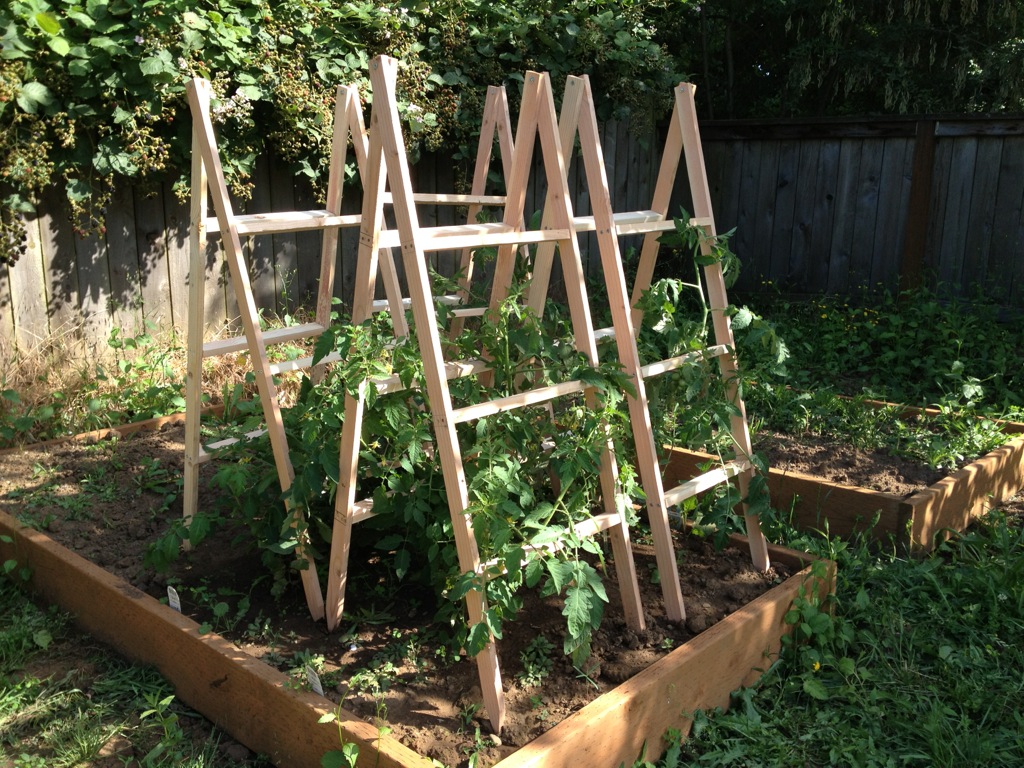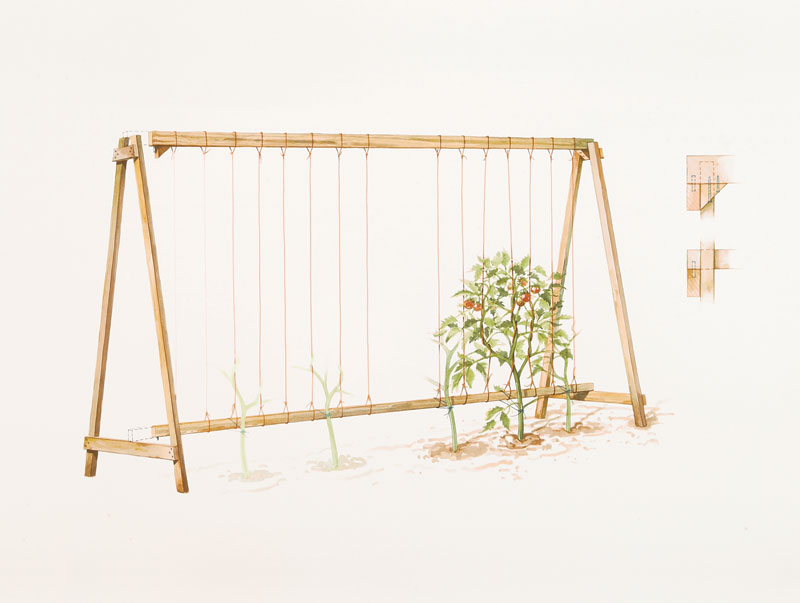If you have a vegetable garden and mostly grow tomatoes, then one of the most important items you will need to boost your tomato garden productivity is a tomato cage. The cage can be made to provide structural support to individual tomato plants and having them can see your tomatoes growing healthy. You can buy tomato cages from stores dealing in them. However, you can gain a lot if you know how to build one on your own.
A standard tomato cage is usually 3-feet tall and cone-shaped to provide reasonable space to tomato plants as they are growing. Regarding their circular profiles, 14-18 inches diameter is considered fine. Though tomato cages are mostly meant for tomato plants, they can as well be used on other plants and that aspect makes them convenient for any person who loves gardening.
Tomatoes plants are determinate, that is, they grow to a specific height after which they boom fruits. For determinate plants, it is preferable to build a cage which has a maximum height of 4 feet. For plants whose vertical growth is indeterminate, 6 feet tomato cage height is fine. Tomato cages can be made at home using cost-effective reinforcement wire.
You just have to make sure that the wire you select for the job is galvanized so that you won’t have to deal with cases of rust. Again, the weave you pick must be wide enough to enable easy access to mature tomato fruit. The other material you shouldn’t miss is bolt cutters – they are used to cut the wire available to the desired shape and size. Here is how you can go about the process of making a tomato cage at home. You shouldn’t forget about a measuring tape as the accessory comes in handy when you will be needed to make measurements of the fence you have.
Measuring and Cutting Fence
Measure and cut a 78-inch length of fencing up to have a piece having 60”x78” dimension. Insist on having the cuts at the end of the fencing squares as doing this will ensure that you end up with extra inches that can be used as handles for closing the cage.
Rolling the Fence to Assume a Circular Dimension

You can do this by laying one section of the fence on the ground and slowly rolling it to form a circular column. After doing that, take a narrow pipe and use that as a handle for looping each of the wires through the squares. Make sure that you measure a mark of 18 inches from the panel sides and this is where your first fence bend will happen. Bend the fence to assume a 90-degrees angle. Repeat the measuring procedure and bending twice more. In your third bend, you will have two sides of the panel meeting.
You can use a pipe to have an easy time when bending the wires and greatly protect your hands from sharp fencing points. Make sure that you tightly connect the joining fence points. Doing that will ensure that the tomato cage doesn’t entangle itself if it is under the influence of a reasonable external force.
Use a wire stab to secure the point at which the two fencing panels are meeting. To have a proper connection of the two sides, slip a ring over the wire stub until it makes a loop around the vertical wires. Use a bolt cutter to cut the stubs and insist on leaving no protruding sharp points that can cause to anybody handling the tomato cage.
You can as well put wood planks on the corners of the tomato cage you have made. To make the right cut profiles that can easily link with, make sure you use the best drill bit sets since they make it for cut profiles to be made and also give precision.
Anchoring the Cage
To ensure that the cage you have made anchors to the ground, you will have to weave wooden stake through the cage wires and use a hammer to give blows that will settle the cage on the ground. If you can’t access a wooden stake, you can as well use a PVC pipe or metal pipe to do the job. Assuming that you have successfully mounted your homemade tomato cage, you can plant two to four tomato plants at its base. As the plants reach reasonable height, you can tie them to the cage so that they get the right structural support. You will certainly enjoy the beautiful look that tomato cages add to a garden and the good thing is that once make one cage, you can expect to use it as long as you would want.
Author Bio:
My name's Danny L. Montgomery. I'm the founder and owner of the blog zukzik.com. I love all things DIY & Home Decor. I hope I will be able to share my experiences with the interested readers
